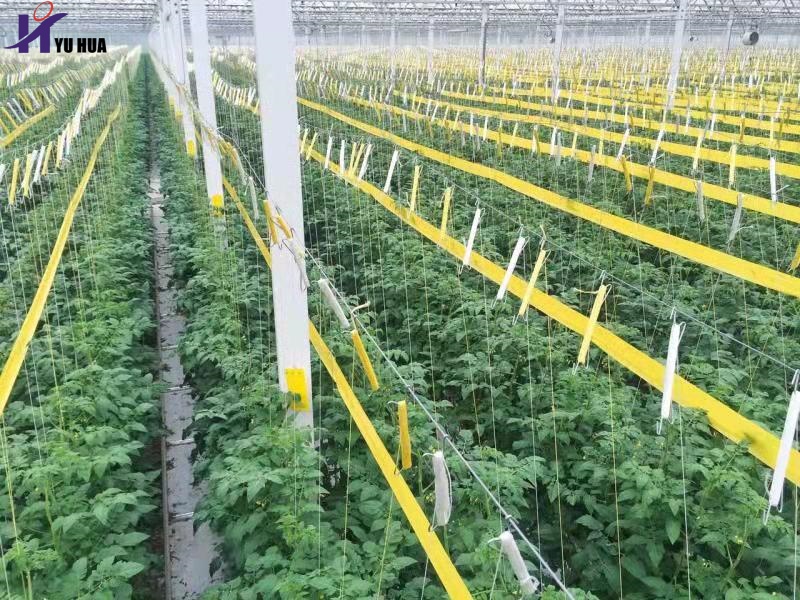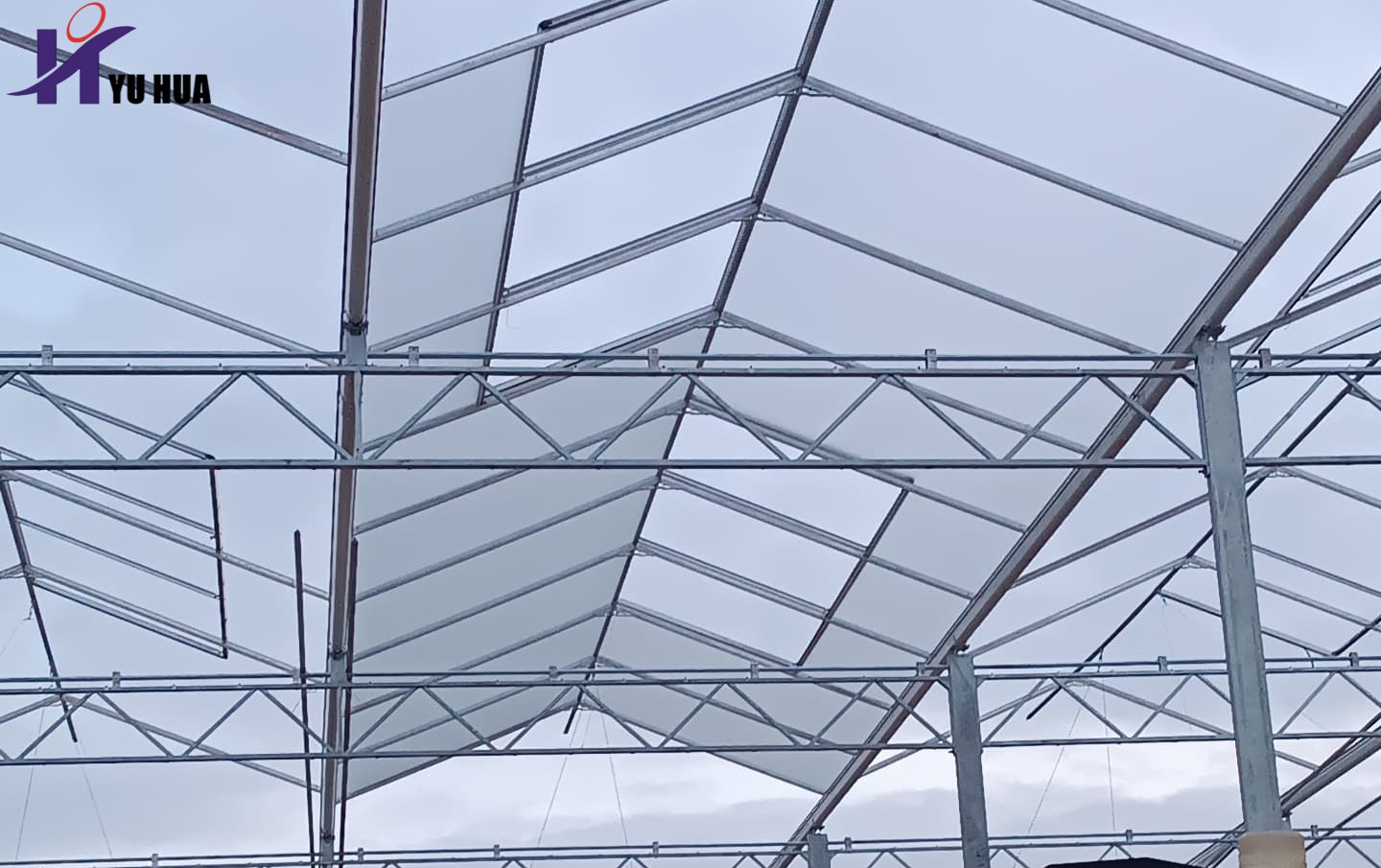
Cleaning and maintenance guide for greenhouse covering materials
The minimum light transmittance of greenhouse crops needs to be comprehensively judged in combination with the type of covering material and the type of crop. The specific standards are as follows:
01 Basic standards
Common minimum value: Most common crops (such as leafy vegetables) need a light transmittance of ≥70% in conventional greenhouses to maintain basic growth needs.
Differences in covering materials:
Plastic film: The light transmittance of new films is generally 80%-90%, but in actual applications, it is affected by aging, pollution, etc., and the minimum light transmittance must be ≥85%.
Glass: The standard requirement for light transmittance is ≥91.5%.
Solar greenhouse: The light transmittance is usually ≥70%.
02 Differences in crop requirements
High-light crops: For vegetables (tomatoes, peppers, etc.), ornamental flowers, etc., the light transmittance is required to be ≥90%.
Medium-light crops: For some leafy vegetables or shade-tolerant crops, the light transmittance can be reduced to about 85%.
Special adjustment scenarios: In areas or seasons with excessive light, the transmittance can be adjusted to 60%-70% through tools such as sunshade nets.
03 Key influencing factors
Material properties: Materials with high haze (such as diffused glass) will reduce transmittance, and high transmittance, low haze covering materials should be preferred.
Maintenance and cleaning: Regularly clean dust and scale on the surface of the covering material to avoid a 10%-20% drop in transmittance.
In summary, the greenhouse transmittance needs to be dynamically adjusted according to the specific planting scenario, but the minimum transmittance of the covering material itself should not be less than 70%.

How to clean and maintain greenhouse covering materials?
01 Cleaning methods
Film materials
Regular cleaning: Use a long-handled soft brush or high-pressure water to rinse the surface dust. The cleaning time should be selected at noon or in the afternoon when the temperature is higher on a sunny day.
Stubborn stains: Avoid scratches with hard objects. Neutral detergent can be used to assist in wiping. Corrosive chemicals are strictly prohibited.
Light transmission recovery: Regular cleaning can reduce the decline in light transmittance (about 10%-20%) and maintain normal photosynthesis of crops.
Glass materials
Daily cleaning: Use a soft cloth or rubber scraper to remove surface dust and water stains; do not use hard brushes or acidic detergents to prevent scratches or corrosion.
Deep maintenance: Use a high-pressure water gun to rinse the glass and gutter silt every 2-3 months, check for cracks and repair them.

Hollow board/plastic board
Use a cleaning method similar to glass, and the damaged area can be repaired with sealant or tape.
02 Damage repair and reinforcement
Film repair
Small area damage: Use special film repair tape or plastic film repair tape to patch it.
Large area tear: Cover with new film for reinforcement, and ensure that the repaired area is flat and has no air leakage.
Glass/hollow board maintenance
When cracks are found, seal with glass glue or replace the damaged board directly.
Check the sharp parts of the frame and wrap them with soft cloth to avoid scratching the covering material.
03 Seasonal maintenance focus
Spring
Clean the surface of the covering material and disinfect to prevent diseases; renew the soil and check the irrigation system.
Reinforce the connection between the film and the frame to prevent loosening or damage caused by strong winds.
Summer
Install a sunshade net to adjust the transmittance (down to 60%-70%), and clean the drainage system to prevent water accumulation.
Strengthen ventilation and check the operation status of fans and ventilation windows.
Winter
Remove snow in time to prevent the covering material from being compressed and deformed; cover the insulation material and check the heating equipment.
Antifreeze the pipes to prevent the material from brittle and cracking due to low temperature.
The diffuse glass and AR-coated diffuse glass produced by Yuhua have cooperated with many large commercial greenhouses in agriculture, horticulture, nurseries and experiments. We have cooperated with large greenhouse project companies such as Havecon, Van Der Hoeven, Kubo, etc. for many years. Yuhua greenhouse glass has a light transmittance of up to 99%, and haze 5/10/20/30/50/70/75 greenhouse diffuse glass is available!
Need more detailed information or a solution of greenhouse glass? Need guidance on how to choose the right glass for your greenhouse?
Consult online customer service, leave us a message or send us an email!
Tags:anti-reflective glass diffuse glass agricultural greenhouses glass greenhouse venlo greenhouse AR glass greenhouses glass agricultural glass horticultural glass #greenhouseglass #Antireflectiveglass #Diffusetemperedglass #Ultrawhitefloatglass #agriculturalgreenhouseglass #diffuseglass #horticulturalglass #Tomatogreenhouse #Coloredpeppergreenhouse #Lettucegreenhouse #Agriculturalgreenhouse #ARglass #venlogreenhouse #greenhouseglass #Antireflectiveglass #Diffusetemperedglass #Ultrawhitefloatglass #agriculturalgreenhouseglass #diffuseglass #horticulturalglass #Tomatogreenhouse #Coloredpeppergreenhouse #Lettucegreenhouse #Agriculturalgreenhouse #ARglass #venlogreenhouse #GlassManufacturer #invernadero #ArchitecturalGlass #ClearFloatGlass #FloatGlass



















